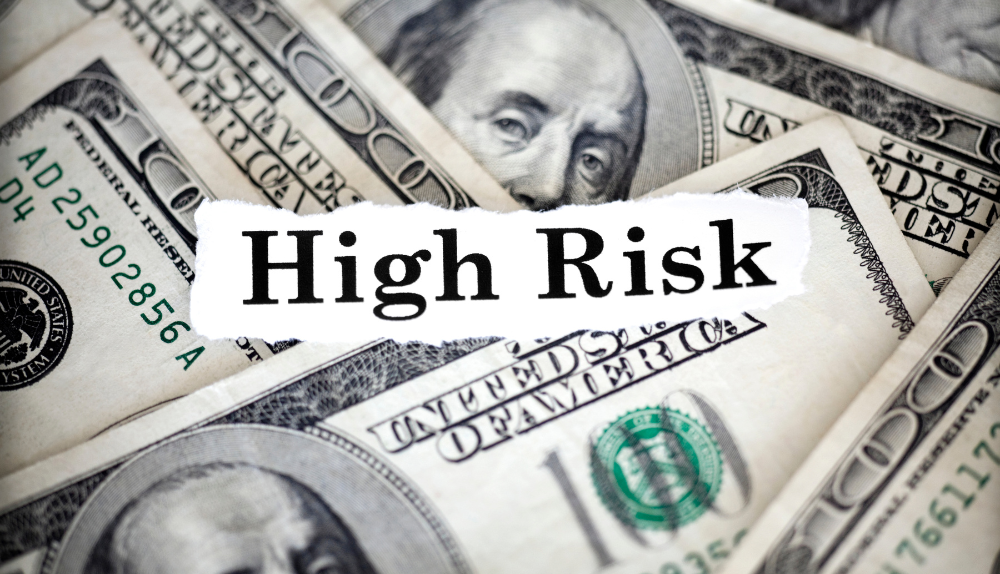
By max May 2, 2023
If you are like most credit card users, chances are you haven’t heard of the MATCH list. It’s the worst nightmare of a merchant. Every bank or financial institution scans this list to see if the merchant’s name is on it before accepting their request for a product or a service. Also known as the Terminated Merchant File (TMF), a MATCH list is like a blacklist that consists of the account perceived as high risk. You can get placed on this list for one or many reasons.
For instance, violating the privacy policy or terms of a payment processor, exceeding the limit of the chargeback a merchant is allowed annually, or defaulting on payments are a few things that put your business at a high risk of getting blacklisted on this electronic MasterCard list. If you are wondering what this list is about and how you can know if your business is part of it, you are in the right place. This post explains to you the details of the MATCH list. Keep reading.
What is a MATCH List?
MATCH stands for “Member Alert To Control High-risk Merchant”. It’s a detailed list of the merchants that are deemed high-risk by MasterCard. You can find this list on MasterCard Connect any time you want. The MATCH list is a new and upgraded version of the Terminated Merchant File.

It’s obvious that any lending institution or a financial organization offering any kind of help to a merchant will want to assess their risk level before granting them financial assistance. This especially makes sense for an acquiring bank or a payment processor.
When a merchant applies for a new business account at an acquiring bank, the bank evaluates its risk by going over the MATCH list. They do it to ensure that the merchant is not blacklisted by MasterCard. Based on this, the acquiring bank decides whether they’d like to open a merchant account. Note that being on this list won’t terminate your existing merchant accounts unless you have defaulted on a payment or exceeded the chargeback ratio threshold. However, creating an account with a new bank won’t be easy for those falling in the high-risk merchant category.
Acquiring banks, especially MasterCard-affiliated ones, are required to view this list before granting a new merchant account to a random business. If you are found on this list, your application will be straight away rejected. That said, some banks might be willing to get a new, high-risk merchant onboard, but they will most likely charge a sky-high fee and a ridiculously high-interest rate. Whether to accept or decline your merchant account based on your name in the MATCH list is the bank’s decision.
The worst part about the MasterCard MATCH list is that you won’t know you are on it until you apply for a new merchant account and get rejected.
Who Puts Merchants on the MATCH List?
Merchants on the MATCH list are those who have had one or multiple business accounts terminated previously. This makes it impossible for a merchant to hide their canceled account. It’s also pretty risky for the merchant, as being MATCHed means it’ll be extremely difficult to find an acquiring bank or a financial institution that’s willing to accept your new merchant account opening application. As mentioned above, only banks that specialize in working with high-risk merchants can accept your application, but that also means an incredibly high fee. The question is who places you on this blacklist? And is it possible to get your name removed?

The list is administered by MasterCard, so it is the card network that is responsible for adding and removing people from this list. However, MasterCard doesn’t view and monitor each merchant’s performance individually, so it’s usually the acquiring banks or payment processors that put people on the MATCH list. The bank where a blacklisted merchant applies for a new account might contact the merchant’s previous banks or processors to find out the reason they were put on the MATCH list.
The biggest issue with people found on this list is that all their personal details with the reason they were put on the MATCH list are clearly specified, giving banks a clear view of the risk involved with these merchants. That is the reason why most banks don’t even contact the previous banks of the merchant before rejecting their merchant account request.
Why Am I On the MATCH List?
As mentioned earlier, there can be many reasons why your business might land on the MATCH list. But the most common reason is the excessive chargebacks. The card network sets a threshold for the maximum chargebacks that are acceptable on a merchant’s account. If you exceed that limit, you might have to face penalties initially. That may soon turn into an account termination, i.e. if the number of chargebacks keeps increasing.
There’s a reason list code that explains why you are in the MATCH list. This can be anything from engaging in illegal activities, such as money laundering, to not complying with the PCI-DSS standards. The acquirer can cancel the merchant’s account with them if they are found to violate any clause mentioned in the terms and conditions of the agreement. The bank can put the merchant on the MATCH list within five days of their account termination.
Here’s a list of the reasons the acquiring bank can put your account on the blacklist.
- Account data compromise
- A common point of purchase
- Laundering
- Chargebacks exceeding the threshold set forth by the acquiring bank or the payment processor
- Too many fraudulent activities were detected on the merchant’s account
- Unused
- Fraud conviction
- Questionable audit program
- Merchants getting bankrupt or insolvent
- Policy violation
- Non-compliance with PCI DSS standards
- Identity theft
- Illegitimate transaction
- Merchant collusion
It’s quite obvious why the acquiring bank will consider a business that falls in any of the above categories to be high risk, but someone stealing the merchant’s identity and using it to conduct fraudulent activity is not in the merchant’s control. Despite that, there’s nothing they can do to reverse the decision. In addition to these codes, the acquiring bank you have an account with might implement its own set of regulations that can put the merchant at high risk of getting on the MATCH list. It’s best to discuss these policies with your processor before signing on the dotted line.
More About MATCH List
By now, you must know the worth of the MATCH list. The list contains up to 5 years of data stored by financial institutions. Any bank can easily scan the list to find the merchant that applied for a new merchant account. It’s mandatory for banks to check this list before getting a new merchant onboard.
However, the decision of accepting or declining their request is totally up to the processor. It’s possible that a merchant who’s been on the MATCH list for years and has several terminated accounts with different banks can still have their new merchant account opened. As you can see, the main purpose of this MATCH list is to warn the financial institutions of the risk a merchant poses.
Usually, the acquiring bank keeps a merchant reserve account where a portion of the merchant’s income from card sales is stored for emergencies. This amount is released back to the merchant over time if they are in good financial condition. If they exceed the chargeback ratio and end up insolvent, the bank will use the funds in their reserve account to recover the loss.
It’s obvious that any acquiring bank wanting to work with a high-risk merchant will do it for an exorbitant processing fee, and they will most likely sign a long-term contract that involves a high penalty if the merchant terminates the contract earlier than the specified period.
What if My Account Got Blacklisted by Accident?
You might wonder if it’s possible that a merchant’s account can be placed on the MATCH list by accident. Yes, it’s possible but that rarely happens. An acquiring bank won’t just put your account on this list by mistake.
Unfortunately, if the mistake does happen, the merchant won’t be notified about it and they won’t know they are on this list until they apply for a merchant account at some other bank and get rejected. If you find yourself on the MATCH list, contact the acquiring bank or company representative to fix the issue.
They will investigate the matter and remove you from the MATCH list. Note that your details will only be removed after five years of entry. It’s hard for a business to thrive without financial assistance for this long. So, the best you can do is follow PCI-DSS compliance and stick to the bank’s security policy.
Bottom Line
Being on the MATCH list affects the business’s ability to get a new merchant account or any kind of financial aid from banks. If you get flagged, you can contact the acquiring bank and try to convince them to remove your account from the list. Or, you may have to wait for 5 years to have the data erased.
